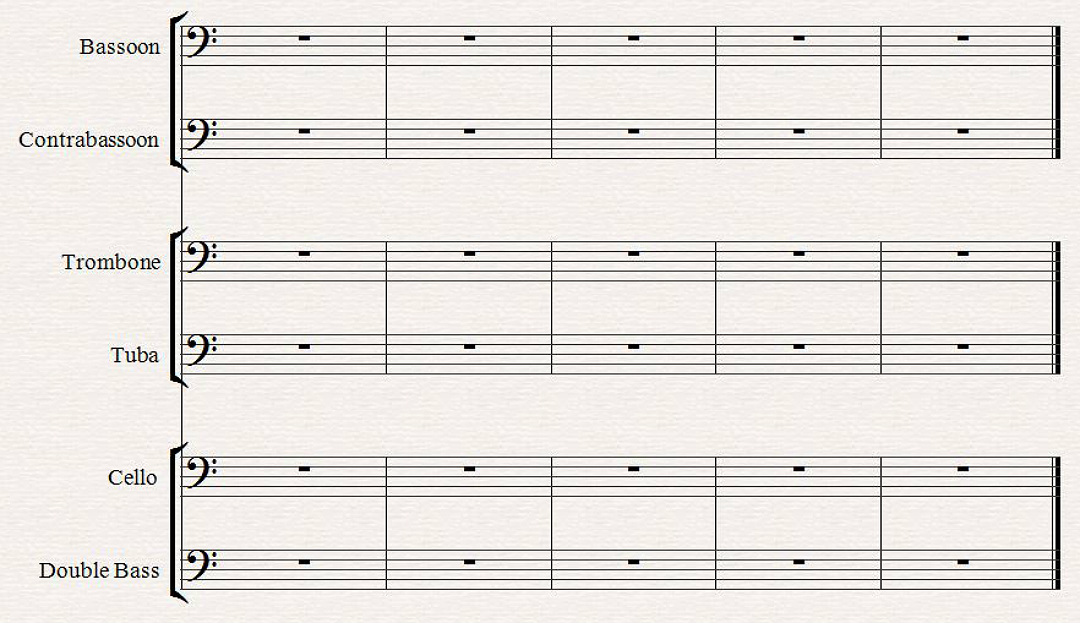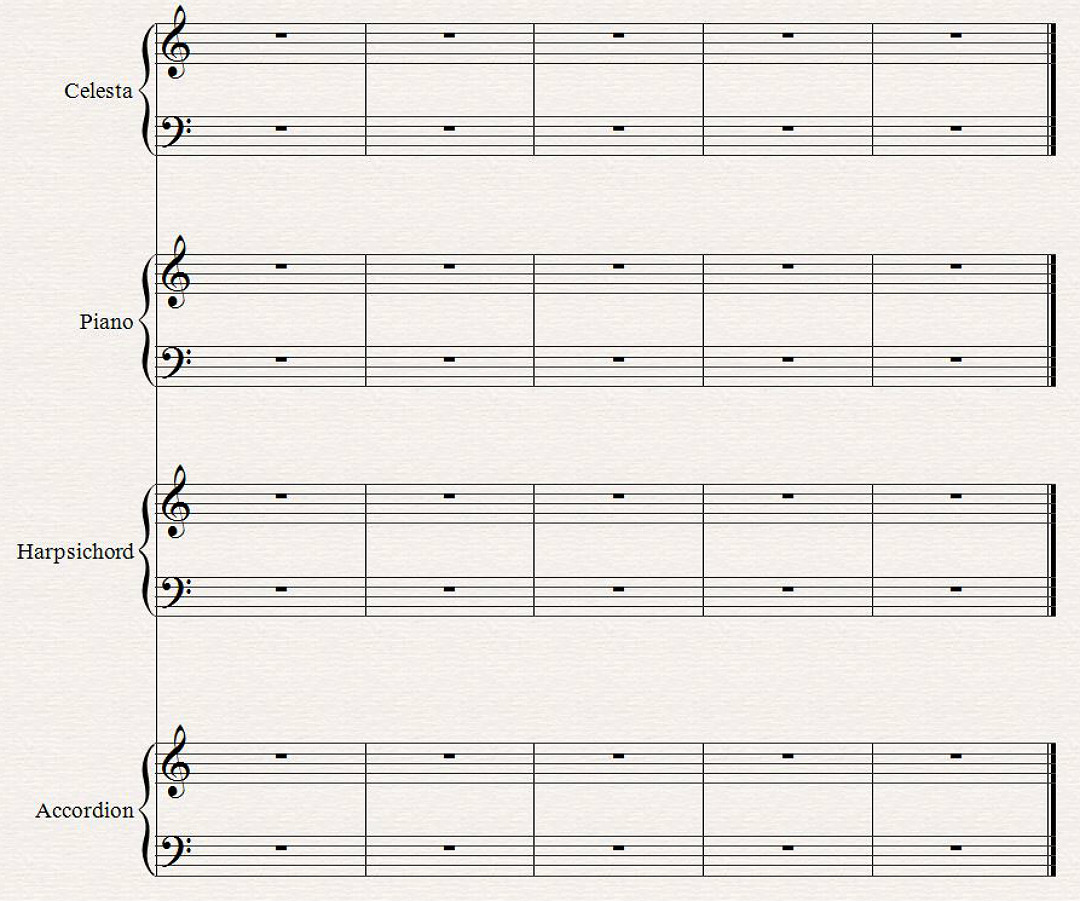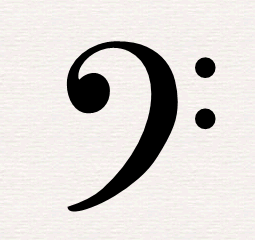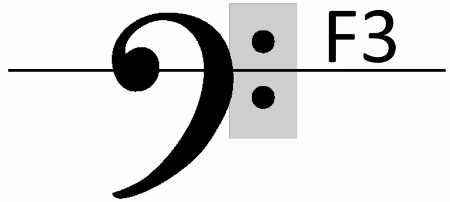Introduction to the F Clef
The F clef is one of the most common clefs in music. It’s used in in all styles, from pop/rock to jazz, classical, film scoring, and everything in between.
It’s especially important for anyone desiring to play bass, piano, cello, or low woodwinds and brass, as well as those interested in arranging or composing music. Compared to treble clef, the F clef is normally used for lower-sounding instruments.
In the previous two lessons, we focused on treble clef. Now that we understand how clefs work, we’ll find it much easier to learn new ones. The mechanics and understanding are exactly the same. The only things that are different are the placement of the notes in relation to the staff (as well as the specific design of each symbol).
Let’s take a closer look at the F clef.
Just like G clef, the F clef’s design centers around the note it’s named after. In this case, it’s the note F, specifically the note F3.
The design of the clef starts out with a small filled-in circle drawn clockwise, then it swings outward and curves around the top, and comes down the right side following a similar curve, finally ending a little to the left of where it began. Two dots are added to the right of the clef.
The 2 dots of the clef are positioned on either side of a line on the staff, and that line corresponds to the note F3:
Bass Clef
The F clef is generally found in only one position nowadays, known as bass clef. For this reason, the terms F clef and bass clef are often used interchangeably. But to be more precise, the bass clef is actually a specific position of an F clef (just like treble and g clef).
The bass clef symbol is positioned so that the two dots of the clef are positioned on either side of the 2nd-highest line of the staff:

The 2nd line from the top is therefore F3:

In bass clef, middle C (C4) is located on the first ledger line above the staff (just the opposite of treble clef):

We can think of middle C as our “home base”, or main reference point for knowing where we are. (Any note could be used as a reference point, but it’s convenient to use middle C since we’re already so familiar with it on the piano keyboard.)
Bass Clef in Use
Bass clef is very common, second only to the treble clef which we already covered.
Here’s a list of common instruments that use bass clef as their main clef: bass guitar, cello, double bass (upright bass), bassoon, trombone, and tuba.
This is an example of some instruments that use bass clef set up as a musical score:

It’s also used in vocal music, including baritone, bass, and sometimes tenor voices (all of which are various types of male voices).
As we learned in a previous lesson, keyboard and harp instruments use two clefs joined together into a “grand staff”, usually with a treble clef on top and a bass clef on the bottom. So piano, keyboard, organ, and harp players have to be fluent in these two clefs:

Music for unpitched percussion (like drums) sometimes uses bass clef, even though the lines and spaces don’t represent pitches but rather specific sounds. This is an alternative to using a special percussion clef.
Baritone Clef
There are a couple other positions for F clef, but they’re no longer in common use nowadays. They’re worth learning about, though, just in case you happen to come across them.
The first one we’ll take a look at is the baritone clef. This clef has a bit of higher range than bass clef, and was often used for baritone voices (a male voice-type whose range is between tenor and bass). It was also sometimes used for keyboard parts. Nowadays, bass clef is normally used instead.
The baritone clef is placed on the staff so that the dots surround the middle line of the staff. The middle line would then be the note F3, as we learned earlier:

Sub-bass Clef
The sub-bass clef, or contrabass clef, is the lowest clef known to man. It was sometimes used to write low bass parts in order to avoid lots of ledger lines.
It’s positioned on the staff with the dots surrounding the very top line:

Practice Quiz
F Clef Quiz
Test your knowledge of this lesson with the following quiz:
Image Attribution:
L1000876_v1 by Sigfrid Lundberg ©2012 CC BY 2.0
practice makes perfect. by Jukie Bot ©2013 CC by 2.0

